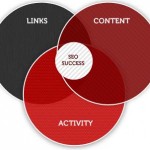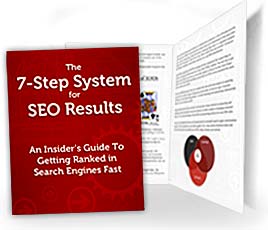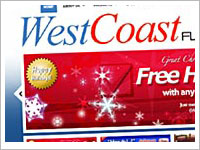How do I maximize my website’s on-page optimization?
This article will help give you a very accurate idea of what on-site search engine optimization is, and what needs to happen in order for your website to be searchable. You don’t need to be some type of search-engine “guru” to pull this off. All you’ll need is a website and control over the content of your site. Leveraging your business online can be a very lucrative investment of time and resources, if you master the two facets of traffic and conversion. You can get great search visibility and boatloads more traffic if you maximize your on-site optimization to it’s fullest. Techniques like what you’re about to learn can earn you BIG BUCKS, and generate a lot more leads for you and your business, if you put them into place.
First and foremost, it’s important to note that if your website’s on-page search engine optimization lacks proper attention, then your business will not be found by anyone unless they specifically search for your exact business name. Not very exciting, is it? But it’s understandable, because you’re not giving the search engines any information about what your website is actually about, so it’s impossible for them to reference it to people who are actively searching for your products or services.
Before you can even begin you’ll want to identify your ideal keyword phrases to optimize your site for. Keyword phrases are small (or large) online “niches” that people search for when looking for your products or services. Some examples include “San Jose carpet cleaning,” “dentist Marina,” “San Diego graphic design,” etc. Google’s Keyword Tool is a great free tool to check the volume of each search phrase. A “gold-nugget keyword” is what you’re after — it’s a keyword phrase that isn’t too competitive (ie not too many search results) yet still gets a high number of searches.
To maximize the searchability of your site, you’ll want to select your best keyword phrases and utilize them in your on-site optimization. There are several different ways and places in which you’ll want to use your keyword phrase.
* The first and most important thing to do is include your keyword phrase or phrases in the “Title” of your Page. These are the words that show up in the top of your browser’s bar. The important thing to note is that Google only looks at the first 65 characters, so be sure to contain your main keyword phrases within the first 65 letters (if you’d like to add your business name, you can do so after 65 characters)
* Also of prime importance is to include your keyword phrase in your site’s meta description, along with other aspects like your business name and location. The meta description is the brief 2-3 sentence description that shows under a hypertext link on Google.
* Be sure to include your keyword phrase in an <h1> tag, and in <h2> and <h3> tags on the page as well, if able. These are specially formatted text sizes and styles present on all web pages.
* In the body text of your site, be sure to have your exact keyword phrase in both bold and italicized lettering. Also make sure that your keyword phrase in the first sentence of your page and in the last sentence. Basically, what you’re doing is letting the search engines know what the general topic of your page is (and coincidentally the phrase you want to rank for).
* Be sure to include an image on your webpage with an “alt tag” that includes your keyword phrase. This is the small text bubble that appears when your mouse pointer hovers over an image. Also, you have the opportunity to name your image after your keyword phrase (without spaces). You want every possible advantage you can get at this so do it!
* Inbound links are important, but it’s equally important to have outbound links to trusted sites. For example, you should include links to your BBB page and other reputable sites. Google looks at websites that a business is affiliated with to ensure that the business is legitimate. Any other types of business associations that you’re affiliated with that are reputable such as “Paypal Verified,” “Trust Guard Certified,” you’d be keen to have. In our experience, we’ve found that these links will not only help improve your site’s ranking, they can also boost your business profile on the outbound site to top search results!
On the flipside, be sure to check and remove outbound links that lead to other sites, especially if they’re of low repute! Including links to other sites will cause yours to lose page rank. Use a “no-follow” tag if you must include such links.
* Be sure to have a video on your home page and include main keywords in the video title. For example, if you want to target “San Francisco pet store,” include that in your video’s title! Having a video on your page can greatly increase your chances to show up on the first page of Google for your keywords.
* Include a Sitemap on your page. This can be as simple as including links to your site’s pages in your footer area. This makes it easy for search engines to “crawl” your website to figure out what it’s about, and more of your pages will get indexed into its system.
* On each of your site’s pages be sure to include the address and contact information of your business. This is absolutely essential if you run a local business, for a couple of reasons: the people who find your business online are generally looking for location and contact information, and it verifies with Google that you are a real local business.
* Finally, be sure to add Google Analytics and Google Webmaster Tools to the structure of your website. The tools are very useful when you’ve learned how to use them, and will give you important feedback about your online marketing efforts. Google gives you useful free tools, use them!
Following these simple on-site search engine optimization strategies can quickly increase your search rating and help you generate more visibility through your online marketing efforts.













